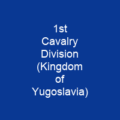The Battle of the Gebora was a battle of the Peninsular War between Spanish and French armies. It took place on 19 February 1811, northwest of Badajoz, Spain, where an outnumbered French force routed and nearly destroyed the Spanish Army of Extremadura.
About Battle of the Gebora in brief

The Battle of Bussaco in September 1810 saw Marshal André Masséna’s Army of Portugal retreat behind the extensive lines of Torres Vedras, a series of forts defending the Portuguese capital of Lisbon. Thirty thousand Allied troops and six major fortresses now stood between the French army and the Lisbon capital, making an attack against Lisbon virtually impossible. By 10 October 1810, only the British light division and a few cavalry patrols remained outside the defensive lines, while Massénas’ army concentrated around Sobral. After a fierce skirmish on 14 October, the French dug themselves in rather than launch a full-scale assault, remaining entrenched for a month before withdrawing to a position between Santarém and Rio Maior. On 3 January 18 11, a French column was confronted by 2,500 Spanish and Portuguese cavalry near Usagre, but that force was only a screen covering the retreat beyond the Guadiana of a Spanish infantry division. That second column was able to take position near AlmendRalejo and await the arrival of the second French column. On 6 January, the column was finally confronted by 5,000 Spanish troops under Gen. Francisco Ballesteros, who retreated without suffering serious harm but remained a threat to the rear of the column. As a result of the battle Soult decided to head off the Spanish force while he continued to protect the delayed siege-train.
You want to know more about Battle of the Gebora?
This page is based on the article Battle of the Gebora published in Wikipedia (as of Nov. 21, 2020) and was automatically summarized using artificial intelligence.







